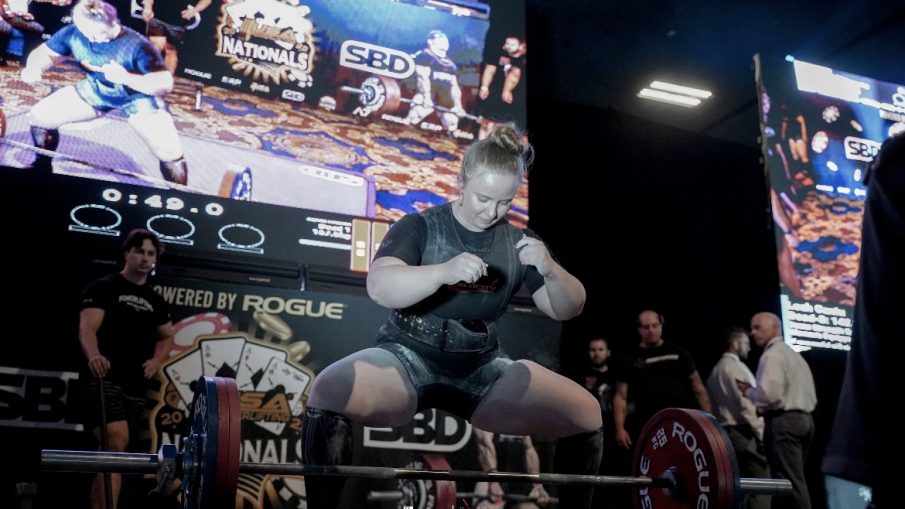Written by: Kevin Cann
There is always this argument about how much, if any variability should be in a training program. There is the “hyper-specific” crowd who argues that we need to repeat the same movement over and over and any deviation from this is wasted energy. On the other side of the spectrum is conjugate, where variability in training is a major piece.
Typically, in a practice setting where the same movements are repeated over and over, you will see an improved result more quickly than in practice with more variability, but this is very deceiving. Research has shown that the better the practice result, the WORSE the learning result is. The learning result is the performance that can be produced permanently.
At the end of the day, we care about stable, stress-resistant, top end strength. We don’t care about the weights we can hit some random day in the gym, or weights we fail to reproduce consistently because they cannot be counted upon on competition day. Maybe you hit them, maybe you don’t.
The reason that these weights tend to be temporary are because the learning system does not care about them due to the inability to transfer it to other movements. It lingers in the learning system and then it disappears. Due to variability in movement, the learning system sees transferrable skills from one movement to another. This increases learning and makes movement stress resistant.
Of course, you can be hyper-specific and still see results. For one, motivation is important and must be present to learn. If someone is motivated from that style, they will do well up to a point. Motivation isn’t just feeling gung-ho about training, but is a top-down AND bottom-up piece that is also attached to fear and arousal. Motivation is the state of the entire organism. If we fear failure, then a program with higher variability, that has decreased performance in practice sessions, will be much more difficult for the athlete to tolerate. This does not mean that variability is a bad choice for that athlete, in my opinion it means that that athlete’s insecurities will hold him back from seeing his or her true potential.
Variation can’t just be random. The intention of the movement must match the intention of the sporting movement. The goals must be the same. A safety squat bar box squat with bands is still a movement that we squat down to competition depth and attempt to stand up as hard and as fast as possible. The intention of that lift matches the intention of the competition movement. The argument of the hyper-specific crowd will be that the angles are different and the muscles used are different.
The body does not match movements based off of specific muscle activity. Movement is set with intention, then mathematical principles, followed by fixed principles determined by the CNS, and lastly specific muscle activity. This order allows for the flexibility to adjust movement at the last seconds to meet an ever-changing environment. The example Frans Bosch gave when explaining this was that people do not typically sign their names large, but if asked to on a chalkboard they do not have an issue even though the muscles used are different. The intention though is the same. This also falls in line with how we learn as babies to move. When a baby mimics an adult they will mimic the intention and use a different muscle strategy to accomplish the task.
Each movement has stable parts known as attractors, and parts that are flexible and adaptable that are known as fluctuators. The attractors of the safety squat bar box squat with bands are the same as the attractors in a competition squat. Think stable pelvis with all of the muscles of the hip co-contracting, energy transfer through the hamstring muscles that requires a specific pelvic position and spinal extension. Where the bar sits, the speed of the movement that is adjusted with bands, the box, and the width of our feet are just fluctuators.
This means that variability is still important as we draw near to a competition. Remember, we are practicing stability in the pieces of movement that are stable no matter what, but in order to target the pieces that allow those stable attractors to be stress resistant, we still need to keep variety at a particular level. This is something that we have changed as of more recently with very good results.
If you feel that you need more specificity (but at this point we should be seeing that specificity is about stability in attractors and the intention of the movement) than I would look at the internal pieces that are leading to those feelings as those internal perturbations are having a negative effect on outcomes.
The research literature is very strong for the case of variability in skill acquisition. Monotony on training will not lead to someone reaching their full potential. They may see results as there are many factors, but will they be the highest results that individual could achieve with the right physical and mental work?
Often people will switch from high variability to less and see results and quickly say that that is what works best for them. However, all training matters and is accounted for within their current results. Even training from early ages. Perhaps the change just gave them the motivation necessary to realize the results that were already there.

